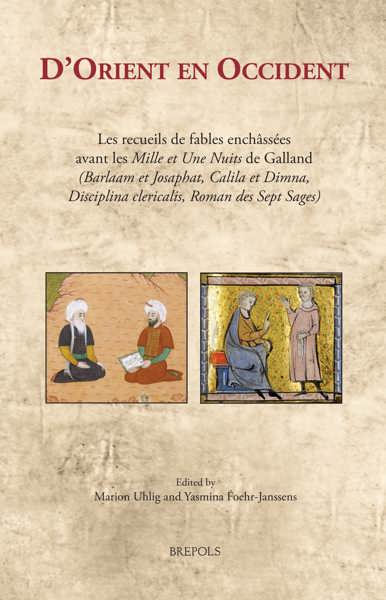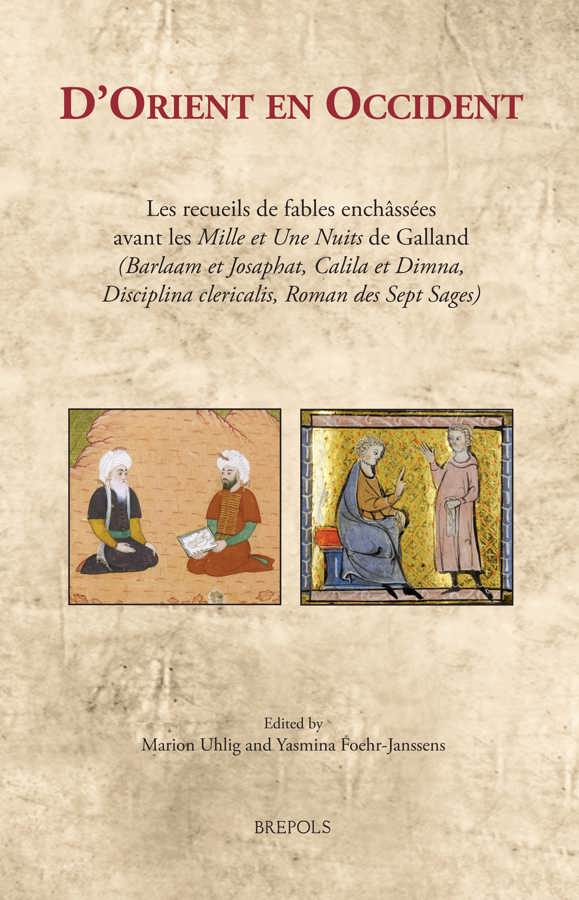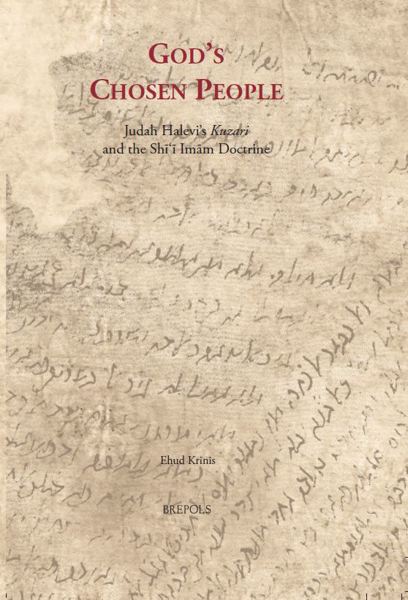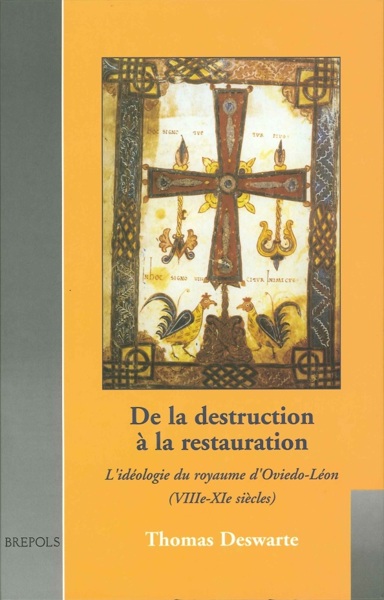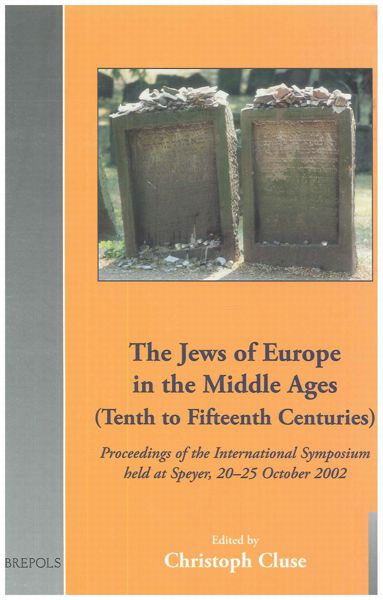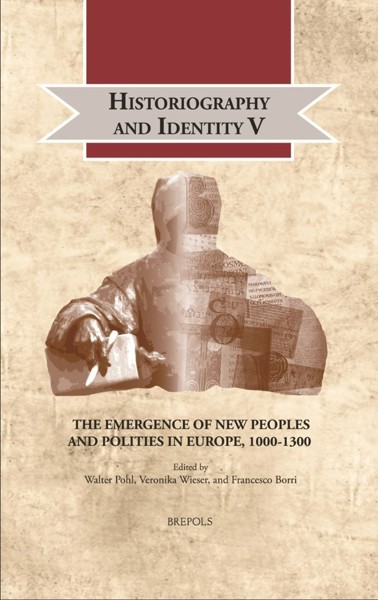
D’Orient en Occident
Les recueils de fables enchâssées avant les Mille et une Nuits de Galland (Barlaam et Josaphat, Calila et Dimna, Disciplina clericalis, Roman des Sept Sages)
Marion Uhlig, Yasmina Foehr-Janssens (eds)
- Pages: 496 p.
- Size:156 x 234 mm
- Illustrations:20 b/w, 2 col., 3 tables b/w.
- Language(s):French, English, Spanish
- Publication Year:2014
- € 130,00 EXCL. VAT RETAIL PRICE
- ISBN: 978-2-503-54687-2
- Hardback
- Available
- € 130,00 EXCL. VAT RETAIL PRICE
- ISBN: 978-2-503-54738-1
- E-book
- Available
Le présent volume offre une occasion exceptionnelle de dialogue entre orientalistes et spécialistes des littératures occidentales sur quatre 'récits à tiroirs'.
"This book contains a valuable collection of scholarly articles, and will be quite indispensable in its area.(...) It is hard to pick out outstanding essays in this assemblage of exceptional quality." (John Beston, in: Parergon: 32.1, 2015, p. 281-282)
"(...) this splendid volume. It is a dense book into which to dip at length and repeatedly." (Ephraim Nissan, in: Fabula, 56, 1/2, 2015, p. 183–187)
“The volume represents a stimulating set of investigations of cross-cultural reception and a rich resource for further work.”(A. Stones, dans le Bulletin Codicologique Scriptorium, 2, 2015)
"Consisting of twenty-one essays plus the editors' introduction (handily presented in facing French and English versions), this hefty and well-produced volume addresses the nature, transmission and purpose of collections of embedded tales, that is, sets of stories embedded within a narrative frame, where the setting for the story-telling drives the choice and arrangement of the tales that follow." (Patricia Skinner, in The Medieval Review, 13.12.2016)
“This volume does an excellent job calling attention to the importance of the cultural work performed by these understudied texts, individually and collectively, from the high Middle Ages through early modernity.” (Sharon Kinoshita, in Speculum, 92/1, 2017, p. 316)
From the Thousand and One Nights to the Canterbury Tales, from the Panchatantra to the Decameron, passing by Artamène or Cyrus Grand, a vast network of texts highlight the richness and originality of the narrative device of embedding (or ‘stories within a story’) inherited from the Eastern tradition. The impressive number of narratives deploying this structure, as well as the extraordinary diffusion that they have known in the East as in the West, throughout the Middle Ages and into the modern period, illustrate the urgent need to rethink the study of these texts, many of which are among the most famous landmarks of universal literature.
The studies gathered here focus on four of these tale collections: the Calila and Dimna (or Panchatantra), the legend of Barlaam and Josaphat, the Seven Sages (or Book of Sindibad), and the Disciplina clericalis by Peter Alphonsi. The first three narratives had shaped the entire history of Eastern literature well before their arrival in the West. The fourth is one of the most important collections we have inherited from the Middle Ages, as evidenced by its dissemination from the Roman de Renart to Boccaccio’s Decameron .
These story-collections drawn from the narrative traditions of the Levant begin to arrive in medieval Europe in the twelfth century. In the West, their influence is felt right up until the modern period through rewritings and adaptations. By bringing together the work of more than twenty specialists in the various literatures that illustrate this tradition, this volume intends to follow the course of the four texts of Late Antiquity and the Middle Ages to the dawn of the Enlightenment.
Des Mille et Une Nuits aux Canterbury Tales, des Panchatantra au Décaméron, en passant par Artamène ou le Grand Cyrus, un vaste réseau de textes témoigne de la richesse et de l’originalité du ‘récit à tiroirs’ hérité de la tradition orientale. Le nombre impressionnant des récits concernés, de même que l’extraordinaire diffusion qu’ils ont connue en Orient comme en Occident, au Moyen Âge comme à l’époque moderne, illustrent l’urgence qu’il y a à repenser l’étude de ces textes dont plusieurs comptent parmi les fleurons les plus illustres de la littérature universelle.
Les travaux ici réunis se concentrent sur quatre recueils, le Calila et Dimna (ou Panchatantra), la légende de Barlaam et Josaphat, le Roman des Sept Sages (ou Livre de Sindibad), et la Disciplina clericalis de Pierre Alphonse, dont les trois premiers ont marqué, bien avant leur apparition en Occident, toute l’histoire de la littérature orientale. Quant au quatrième, il constitue l’un des recueils les plus importants que le Moyen Âge nous a transmis, comme en témoigne son immense diffusion du Roman de Renart au Décaméron de Boccace. C’est à partir du XIIe siècle que ces récits-recueils font connaître les traditions narratives du Levant dans l’Europe médiévale. Leur influence se fait sentir jusqu’à l’époque moderne dans le domaine occidental, à travers des réécritures et des adaptations. En réunissant les travaux de plus d’une vingtaine de spécialistes des domaines et des littératures concernés par cette transmission, le présent volume entend suivre le parcours des quatre textes de l’Antiquité tardive et du Moyen Âge à l’aube des Lumières.
Illustrations
Avant-propos — Hans R. Runte
Introduction — Marion Uhlig & Yasmina Foehr-Janssens
I. D’Orient en Occident: la question de la transmission
Frames Eastern and Western — Barry Taylor
De Kalila et Dimna à la Disciplina clericalis ou de Borzouyeh à Pierre Alphonse — Abouba kr Chra ïbi
Aux sources de la légende de Barlaam: le calife et l’ascète — Charles Genequand
L’Histoire de Barlaam et Josaphat: transformations et transpositions d’un recueil de fables enchâssées dans la littérature exemplaire — Victoria Smirnova
II. Les recueils de fables enchâssées: une tradition occidentale
Barlaam y Josafat: tres lecturas — Carlos Alvar
The Seven Sages of Rome: Narration and Silence — Karla Mallette
La mise en scène du narrateur dans le prologue du Roman des Sept Sages de Rome (Paris, BnF, MS fr. 1553) — Madeleine Jeay
Es geschieht in den besten Familien: Barlaam und Josaphat und das Problem der Familie — Constan za Cordoni
III. Les fables et leurs métamorphoses
What Ails the Sodomite King of Egypt? ‘Senescalcus’ in the K Sept Sages de Rome — Mary B. Speer
From Paternal Advice to Amorous Dialogue: Reading through the Frame of Fabular Exchange — Amy Heneveld
Le mort qui confessa ses méfaits au vivant: fables enchâssées entre l’arabe et l’hébreu dans Barlaam et Josaphat — Joseph Sadan
La parabole de l’homme dans le puits et la fable du puits du Mūlasarvāstivāda-Vinayavastu — Elsa Legittimo
IV. Manuscrits et enchâssements
Le Kalila et Dimna de Paris, BnF, MS fonds latin 8504 (1313): Raymond de Béziers enseigne la fable orientale aux princes français — Nancy Freeman Regalado
L’image enchâssée dans le Calila e Dimna — Hugo O. Bizzarri
De Jérusalem à Rome, le Roman des Sept Sages dans le manuscrit de Paris, BnF, MS fr. 1553 — Yasmina Foehr-Janssens
Un voyage en Orient: le Barlaam et Josaphat de Gui de Cambrai et le manuscrit de Paris BnF, MS fr. 1553 — Marion Uhlig
V. À l’aube des Mille et une Nuits
Las fábulas de la Disciplina clericalis y su difusión impresa —María Jesús Lacarra
Kalila et Dimna à Constantinople et dans l’Italie de la Renaissance: la traduction du Stephanites et Ichnelates grec et les autres adaptations — Elena Sternai Saraceno
Les enjeux des réécritures de romans orientaux au temps de la Réforme catholique en France — Nancy Oddo
La Bible comme accessoire: le potentiel d’équivocité de la légende de Barlaam et Josaphat sur la scène française du XVIIe siècle — Barbara Selmeci Castioni
La Legende de Barlaam et Josaphat en Russie: succès populaire et fortune littéraire — Olivier Azam
Index
